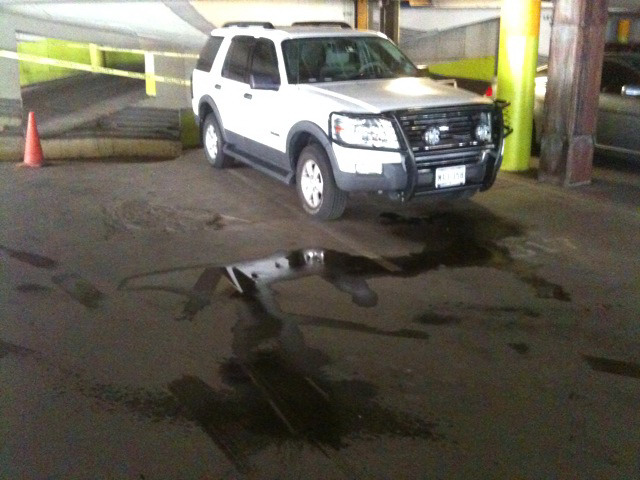Blog

Common Causes for Coolant Leaks 3 Common Causes for Coolant Leaks
he cooling system in your car is vital to the proper functioning of the car’s engine and sometimes coolant leaks can toy with your car's efficiency and effectiveness. The car's coolant system works by circulating a coolant and water mixture under pressure through pipes through your engine and radiator, thus cooling the engine. The temperature of the coolant rises as the car runs and the coolant expands so any excess coolant in the system moves into a reservoir tank by way of rubber hoses. But when this system isn't working properly, you risk running into expensive repairs. Fixing a coolant leak as soon as possible is crucial.
Identifying the Coolant Leak
There are really only three common causes for coolant leaks, although each type of leak has several possibilities, varying in severity. You may notice that coolant has collected on the ground under your car or that your reservoir tank is not as high as it should be. This could be evidence of a slow leak in your system. A suddenly overheated engine is also another key tip-off that you may be facing a coolant leak. You may even be able to smell the coolant leaking. Oftentimes, the type of leak is easy to determine but sometimes it takes a little more effort to find it. It is a good idea to check the level of the coolant reservoir tank with every few gas fill-ups. Below are the common causes to your coolant leaks:
1 - Leaky Radiator Cap
If you have a leaky or a weak radiator cap, you may experience loss of coolant from the overflow tube every time the coolant heats up. The radiator is a pressurized system so if there is a loss of pressure from the cap not fitting properly or if the cap is the incorrect cap for the radiator, the pressure will be lost and a leak could occur. This can be diagnosed with a pressure test of the radiator cap. Refer to your car’s manual for the proper cap and pressure.
2 - Internal Leak
An internal leak won't cause a puddle of coolant under your car. Instead, it will be noticeable when your coolant level does not stay constant and you find that you need to constantly refill the tank to keep your engine from overheating. An internal leak could be caused by a leak in the head or block or perhaps a leaky head gasket which lets the coolant escape its system.
3 - External Leak
An external leak is the type of leak which is most easily diagnosed. More often than not, when you have an external leak, the coolant escapes and your car quickly overheats. Most likely you can easily spot where the leak is coming from by looking at it; a split or broken hose or a hole in the radiator are two good examples. Leaks in the water pump, heater core, or engine freeze plugs can also allow coolant to escape. These too are easy to diagnose by a visual inspection.
You may also find that you have a crack in the coolant reservoir. Since the coolant in the main system is what is keeping the car engine cooled, it will most likely not cause the car to overheat, but it is in this case that you will see coolant pooling under your car when it sits for long stretches of time.
Posted on March 2018,22 // Author: Admin